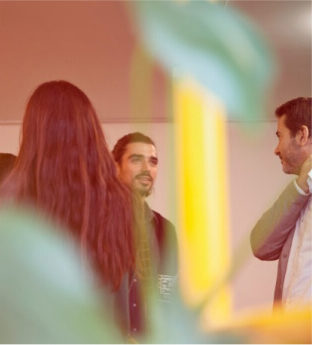How Contemporary Galleries Are Reinventing Exhibition Design
The white cube gallery space, once the unquestioned standard of art presentation, is undergoing a radical transformation. Today's most innovative galleries are treating exhibition design as an art form in itself, creating immersive environments that enhance rather than merely contain the artwork. This shift represents a fundamental rethinking of how art spaces can engage with audiences and support artistic vision.
Modern exhibition design has evolved into a sophisticated practice that borrows from theater, architecture, and environmental psychology. The most compelling installations create a narrative journey that begins the moment visitors approach the gallery and unfolds through carefully orchestrated sequences of space, light, and movement.
Sensory Architecture
Leading galleries are moving beyond visual presentation to create multi-sensory environments that engage all the senses. Subtle use of sound design, atmospheric scents, and textured surfaces adds depth to the viewing experience without overwhelming the artwork. These carefully calibrated sensory elements work together to create a more memorable and emotionally resonant experience.
Some galleries are experimenting with temperature variations between spaces, using thermal design to create subtle transitions that influence how visitors perceive and interact with different works. This attention to physical comfort and sensory engagement represents a new frontier in exhibition design.
Dynamic Lighting Innovations
The revolution in LED technology has transformed how galleries approach lighting design. Computer-controlled systems can now adjust color temperature, intensity, and beam spread in real-time, responding to natural light conditions and visitor movement patterns. This dynamic approach allows galleries to optimize viewing conditions throughout the day while reducing energy consumption.
Advanced lighting systems can create subtle variations that guide visitors through exhibitions, highlighting key pieces and creating emotional transitions between different sections. The best systems achieve this while remaining imperceptible to conscious awareness.
Flexible Space Design
Contemporary galleries are incorporating modular architecture and movable walls that can be reconfigured for each exhibition. These adaptable spaces allow curators to create custom environments that support specific artistic visions while maintaining the flexibility to accommodate diverse shows.
The most innovative spaces use mechanical systems that allow walls to shift position, ceilings to adjust height, and floors to change level. This architectural flexibility enables galleries to transform completely between exhibitions, creating unique experiences for each show.
Digital Integration
Technology is being seamlessly integrated into gallery spaces in ways that enhance rather than distract from the art experience. Projection mapping, interactive displays, and augmented reality elements are being used to provide context and deeper engagement opportunities without compromising the primary viewing experience.
The key to successful digital integration lies in making technology feel like a natural extension of the space rather than an obvious addition. The best implementations are those that visitors barely notice until they choose to engage with them.
Sustainable Design Practices
Environmental consciousness has become a crucial consideration in exhibition design. Galleries are incorporating sustainable materials, energy-efficient systems, and recyclable installation elements without compromising aesthetic standards. This commitment to sustainability extends to packaging, shipping, and storage solutions.
Leading institutions are developing innovative approaches to reduce the carbon footprint of exhibitions while maintaining world-class presentation standards. These efforts include using renewable materials, optimizing energy consumption, and designing for minimal waste.
Social Space Integration
Modern galleries are recognizing the importance of social spaces within the exhibition environment. Carefully placed seating areas, discussion corners, and contemplation spaces allow visitors to process their experience and engage in dialogue about the work. These social zones are designed to enhance rather than interrupt the exhibition flow.
The integration of social spaces reflects a broader understanding of how visitors experience art and the importance of creating opportunities for reflection and discussion within the gallery environment.
The future of exhibition design lies in this holistic approach to creating meaningful art experiences. By treating the gallery space as an active participant in art presentation rather than a neutral container, institutions are discovering new ways to engage audiences and support artistic vision.



